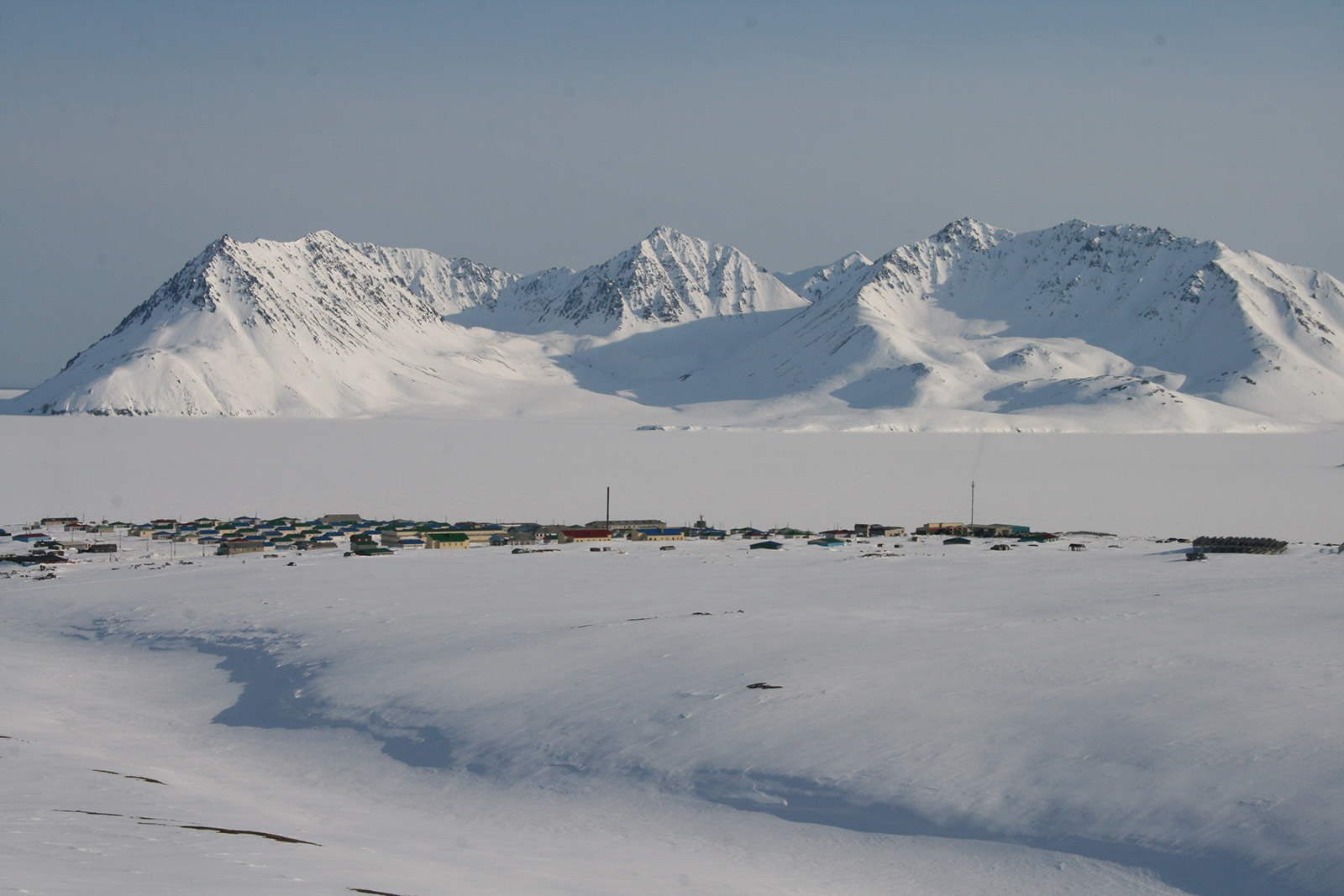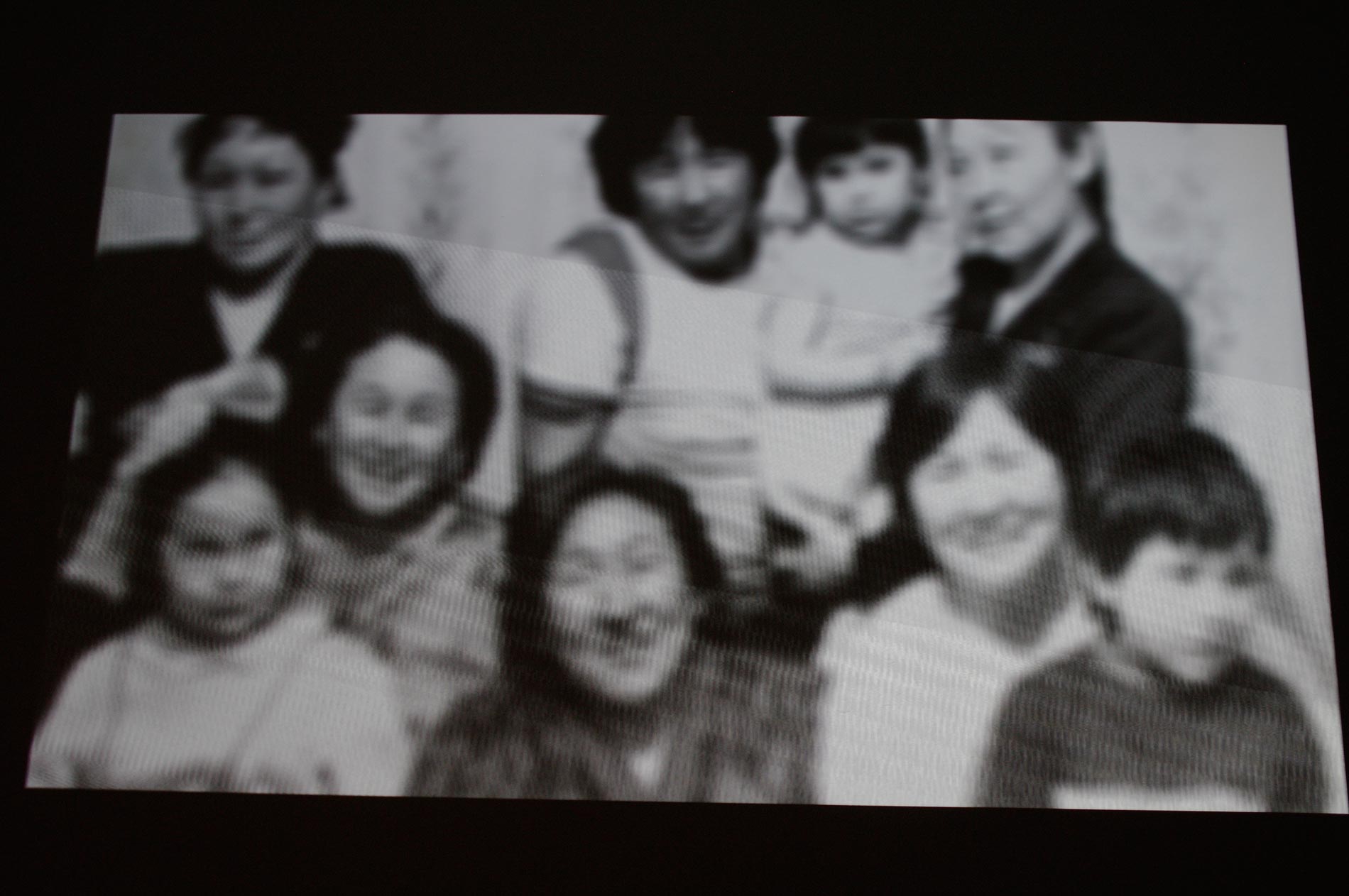About the exhibiton Different colours of white (Eskimo is not dead)
Curator, Concept: Jaroslava Panáková (SK)
Authors (in alphabetical order): Martin Búřil (CZ), Makhina Dzhuraeva (TJ/RUS), Olga Fischer (RUS/DE), Friederike von Hellermann (DE), Kryštof Pešek (CZ).
The exhibition was held from 8th May to 15th June 2013 in the gallery Raum Hellrot in Halle Saale, Germany.
The exhibiton was supported by the Art Foundation of Saxony-Anhalt and the Max Planck Institute for Social Anthropology in Halle.
Partners: Gallery Raum Hellrot and Faculty of Social and Economic Sciences, Comenius University in Bratislava.
Short description
New Chaplino is a small hamlet with Chukchi and Yup’ik Eskimo population (420 inhabitants) situated on the coast of the Bering Sea. On the sea side, in the distance to the visible horizon, there is the Russian-American border and beyond it – Alaska. On the other side, there are hills. The sea, the hills, sea gulls, dog sledges, walrus and whale meat, reindeer meat from Chukchi people, upa (sea potato) – all these do not represent just elements of the place and its spatial description (topography) but they constitute the enjoyable attributes of this place (topophilia). Ethnography could be a happy science about happy places, a topophilic science, but in such case it would not be true. If art is born from tragedy, then ethnography exists beside it. People often experience difficult stories.
This exhibition is dedicated to one of such stories – death. One example is the traditional belief of the natives, for whom death is just a part of the life-giving cycle and the soul exchange. A person is born when the ancestors in the realm of the dead let the soul enter to the realm of the living. The soul knows that its existence is a kind of loan and one day it will have to go back to the realm of the dead. The number of souls is limited, and therefore the same soul travels to the realm of the living several times. The Yupiit natives say it is five times. The belief in debt and return is kept to the present days. It is materialized by the name. After the birth of a child, the relatives establish which ancestor has come back as the new-born and give him or her the corresponding name.
This topic is presented by the interactive installation Aurora Borealis, video projected on two screens The WHALE dance and The Whale DANCE, and the piece The family tree ornament. Ossarium represents a metonymy of the Eskimo cemetery. Images from gravestones as large as passport photos are enlarged to such a scale that emphasises the tension between the obligation to remember the deceased and the harsh reality that the photo portraits get deteriorated by severe weather. Can those whose faces are lost be still remembered? The Eskimo legend The Man who became a star introduces us to the book object of the same title. The book is an example of haptic art; it can be touched, rubbed, sensed, or felt but the letters in it seem to be just half-material, half-imagined entities. Cut-out pieces form the gaps and these, in return, are not more than mere shadows.
The names of ancestors and their life stories may resemble footprints in the snow that get easily blown away by the wind. If the transience of human memory was not tamed, the memories would disappear in the darkness forever.
In the memory of those who left us in 2012 and in the beginning of 2013:
Died of old age or illness:
Elena Yatta
Anatoliy Askhakhtykak
Raya Kuyapa
Polina Ankatagina
Lena Tivlya
Died by accident or suicide:
Evgeniya Numynkau, committed suicide by hanging
Vyacheslav Burdin, stabbed
Dina Nosukak, raped and killed
Viktoriy Mumikhotkak, stabbed
Sergey Tivlya, committed suicide by hanging
Valeriy Tynakergin, died of hypothermia
PAMODAJ Community
Address: B. Němcovej 4035/2, 03601 Martin , Slovakia
Identification number: 42391491
Tax number: 2024185878
Contact person: Jaroslava Panáková







